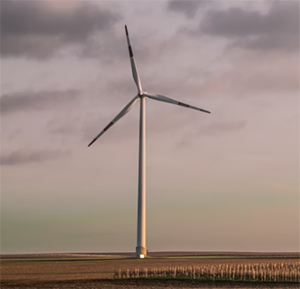
Making a Difference
LAST NIGHT I watched Sir David Attenborough, the famed British naturalist & historian, narrate a documentary on the “tipping points” of the threats to our civilization. These are the problems that we face as a result of climate change and resource sustainability.
One of the themes was our capability to mitigate or stop various points of disaster. The idea of defining the tipping points is that we can quantify the time and action required for a change of direction. The scientists and filmmakers used the example of our current experience as a global community to fight and mitigate COVID-19. This pandemic appears to have raised the awareness that what affects the other side of the planet today will affect our own tomorrow.
of disaster. The idea of defining the tipping points is that we can quantify the time and action required for a change of direction. The scientists and filmmakers used the example of our current experience as a global community to fight and mitigate COVID-19. This pandemic appears to have raised the awareness that what affects the other side of the planet today will affect our own tomorrow.
The role of an investment advisor serving individual and family investors is to ascertain the needs and priorities that translate to financial goals. There is a growing awareness that where you invest your financial resources has an impact for better or worse, whether you are investing in your personal IRA or a large pension investing billions of dollars. It strikes home—where I direct my investments matters a lot! In 2015, I was introduced to a company that acquires and operates renewable energy. I began to learn more about renewable energy and the “energy transition” taking place globally. As an investment advisor, I began to see the huge scale of this transition and the opportunity for every investor of every type to participate. Renewable energy infrastructure, production and distribution is certainly a great place to invest. There are however many parts of environmental sustainability that need investment to flourish.
Investing Your Priorities
The biggest pitfall for impact investors I have observed while researching the companies and funds that are labeled “ESG” or “socially responsible” is that they mostly turn out to be big tech and healthcare. These are companies like Apple, Microsoft, Amazon, Pfizer that check all the boxes, but do not directly impact the urgent environmental sustainability needs required by the challenges. in other words:
- There are funds and ETFs that include companies observing strict ESG practices. These are usually big tech companies and other companies that are following some or all the U.N. sustainable development goals (SDGs). There are 17 SDG’s that were put forth by the U.N. in 2015. All of them are aspirations that most can agree are of high and urgent importance. The companies that are participants in the various ESG practices seem to be very committed to sustainability goals, to their credit. However:
- An investor that wants to directly impact environmental sustainability must understand that they are not investing for direct environmental impact with these funds and ETFs. Although these companies are trying to reduce their carbon “footprint” they don’t directly act to create and perform the functions of moving environmental sustainability forward.
For example:
Apple Corp. (AAPL: NASDAQ) is pursuing extremely ambitious ESG goals and could be considered a “socially responsible, environmentally friendly” company. Certainly, these are reasons they should be considered in an ESG fund. And yet:
Hannon Armstrong Sustainable Infrastructure (HASI: NYSE) is a  company that invests in energy efficiency, solar, wind, and green real estate, and creates green bonds. Literally 100% climate solutions are the company mission. This would be an example of a company directly impacting climate change and environmental sustainability.
company that invests in energy efficiency, solar, wind, and green real estate, and creates green bonds. Literally 100% climate solutions are the company mission. This would be an example of a company directly impacting climate change and environmental sustainability.
The important consideration for investors wanting to make impact with their use of resources is due diligence to confirm that your investment choices match your personal priorities and goals.
These are some of what we’ve learned about the ESG investing landscape…There is, of course, always more to learn!
If you are interested and motivated to pursue ESG-related investing; I have a few definite actions to refine your search:
- Know the specific area(s) of impact that is most meaningful to you (renewable energy, resource sustainability like water and waste, etc.).
- Review funds and/or company’s specific business models and focus. (A fund that is labeled “sociably responsible” and has primarily big tech firms may not satisfy your desire to impact sustainability directly).
- Question: Is capital and financing readily available for the company business plan?
- Will the company’s supply chain support its activities and growth?
- Does the performance record and company longevity meet your investment risk profile?
I confess that as an investment advisor most of our research and due diligence has gone toward the “E” of ESG investing—meaning Environmental. We are focused primarily on the Energy Transition to zero carbon use and environmental sustainability.
There is a great deal of expertise available on all the aspects of ESG investing.
In closing, I would encourage anyone, regardless of your investment resources, to give some of your attention to this critically important area of impacting climate change and improving all lives— everywhere.
Jeff
